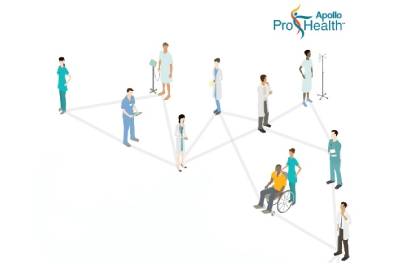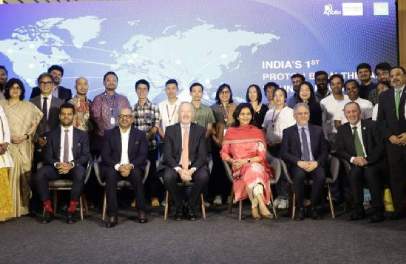Congenital Deformities: Lower & Upper Limbs

Deformity is an alternation in shape of limbs.
Causes of deformity can be broadly grouped as:
a) Congenital deformities
b) Acquired deformities
Congenital deformities:
The exact cause is still not established. There are several factors causing these deformities such as genetic factors operating on the developing fetus during intra uterine development. Teratogenous influence of drugs and chemicals can also cause congenital deformities.
Congenital deformities of upper limbs:
a) Shoulder – Sprengel’s shoulder.
b) Elbow – congenital superior radio ulnar synostesis.
c) Wrist – Madelung’s deformity.
d) Hand – syndactylism, poly dactylism
Congenital deformities of lower limbs:
a) Congenital talipus equino varus (club foot)
b) Congenital dislocation of hip
c) Congenital genu recurvatum, genu varus (bow knees)
d) Congenital pseudoarthrosis of tibia (bow legs)
Acquired deformities:
The most common causes of acquired deformities are;
a) Trauma
b) Infection
c) Degeneration
d) Tumor
e) Metabolic disorder
Trauma:
Injuries to bones, nerves, vascular and soft tissues cause deformities such as malunited fractures, claw hand, burns contractures etc.
Infections:
Infections of bone and joints are one of the most common causes of deformities. Tuberculosis and septic infections cause the largest number of deformities. Infected non-union of long bones is indeed a big challenge.
Degeneration:
Degeneration of the joints plays a major role in deformities and most commonly occurs in the knee joints. (Osteoarthritis)
Metabolic and other systemic disorders:
Metabolic and hormonal disorders may cause skeletal deformities. For example:- rickets, vitamin D deficiency, hyper parathyroidism, senile osteoporosis and Paget’s disease.
Management:
Conservative Methods :
Conservative methods must always be tried first. These include methods such as-
- Physiotherapy: Passive stretching corrects many deformities of mild degree.
- Splints and casts: this is the commonest method used to correct deformities in children.
- Traction: may be used for deformities caused by muscle spasm.
- Manipulation of joints under anesthesia can be done to release adhesions.
Surgical methods:
When conservative methods fall and deformity causes disability, surgical methods are used. Surgical procedures include-
- Soft tissue procedures
- Bony procedures
Soft tissue procedures:
These are always tried first to correct deformities.
- Postero medial soft tissue release in club foot.
- Tendoachilles lengthening and posterior capsulotomy in equinous foot.
Bony procedures:
In severe deformities bony procedures are done along with soft tissue surgeries.
- Osteotomy is done to correct deformity of bones.
- Arthrodesis is done to correct deformity of joints.
Let us now take a close look at one pioneering technique – limb deformity and limb length discrepancy correction by the Ilizarov technique. The advantages of this method are that the patient remains on weight bearing throughout treatment and can move the joints in the vicinity of the apparatus.
In associated infections or with osteoporotic bone no other method can be used and the Ilizarov method is the only treatment of choice.
Professor Garvill Abhramovich Ilizarov invented and developed this extremely versatile circular ring fixator in the remote Russian city of Kurgan in Western Siberia in the early 50s. For 15 years he worked in obscurity in a tiny two storey modern hospital treating patients with his revolutionary but unrecognized technique. In 1965, The Ministry of Health from Moscow observed Dr Iliazarov’s work on the circular fixator as they were applied to patients in various clinical situations in orthopaedics and also duly recognized his immense contribution. From 1965 to 1983 more than 25,000 patients were treated at the established All Pan Union Ilizarov Scientific Center for Restorative Orthopaedics and Traumatology in Kurgan, Siberia, U.S.S.R.
From 1984, surgeons from various parts of the world have trained in the Ilizarov Technique and popularized the concepts of Prof. G.A. Iliazarov throughout the world. Apollo Hospitals was the pioneer in India for this technique.
Ilizarov ring fixing method:
This consists of 3 phases.
Operative phase:
“K” wires are passed through bones proximal and distal to the deformity. These ‘K’ wires are fixed to the Ilizarov rings by wire fixation bolts – one ring proximally and one ring to the deformity. Both the rings are connected by hinges and threaded rods.
Distraction phase:
Distraction for correction of deformity is usually started on the 10th day and continues at the rate of about 3 mm daily till the deformity is corrected. Duration of correction depends on the amount of deformity to be corrected and limb length discrepancy. Once the deformity is fully corrected, the apparatus is locked.
Consolidation phase:
This phase extends from the locking phase to the completion of solid bone formation. It takes about 2-3 months. Once the bone is solid, the Ilizarov ring fixations are removed. The patient is mobilized initially for partial weight bearing and later to full weight bearing with support.
Article written by :
Dr. R. Gopalakrishnan
Chief Orthopedic Surgeon
Apollo Hospitals, Chennai.
UPDATED ON 28/03/2024
Apollo Highlights & Updates
 On World Health Day, Apollo Hospitals has unveiled the 4th edition of the Health of Nation report....
On World Health Day, Apollo Hospitals has unveiled the 4th edition of the Health of Nation report.... Call Us Now
+91 8069991061
Book Health Check-up
Call Us Now
+91 8069991061
Book Health Check-up





